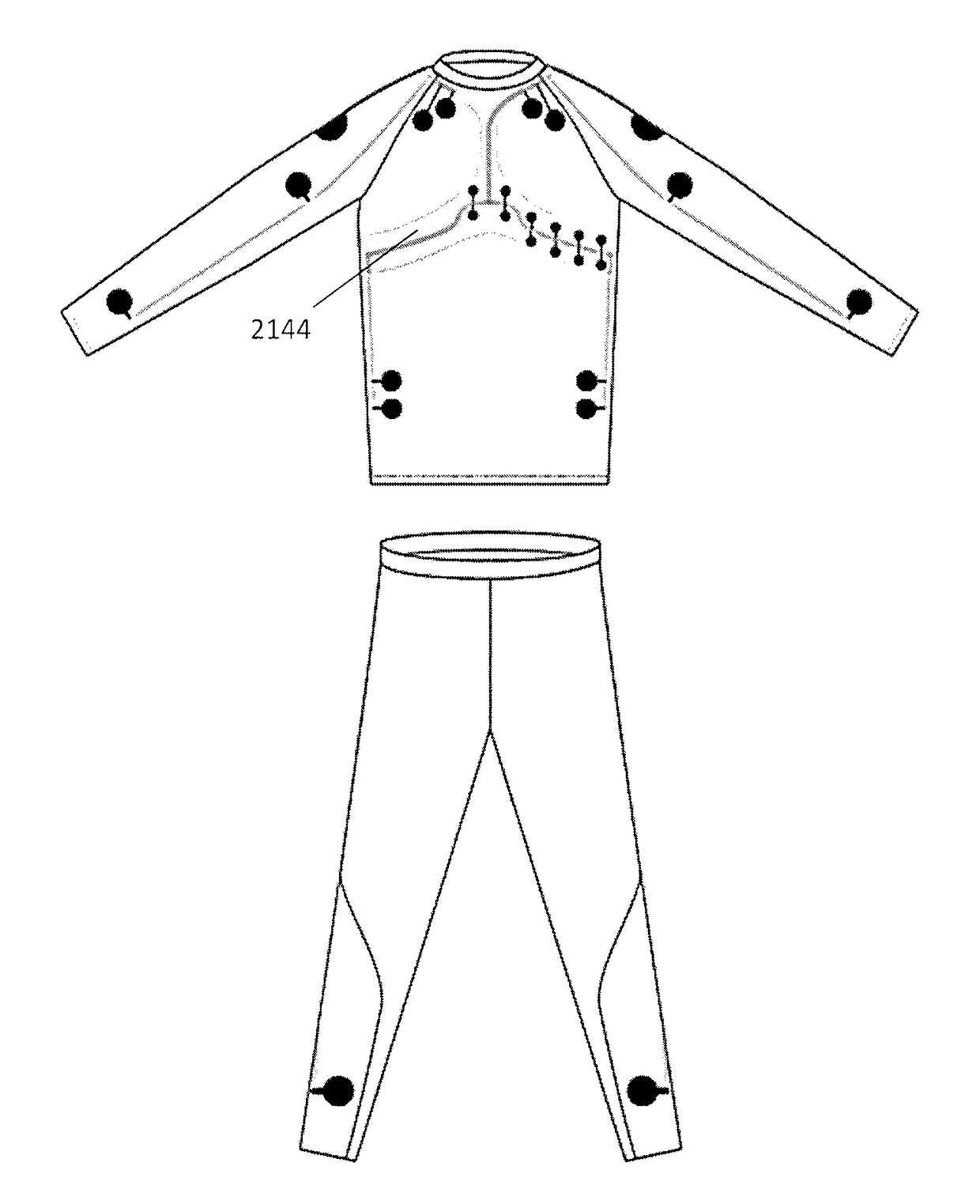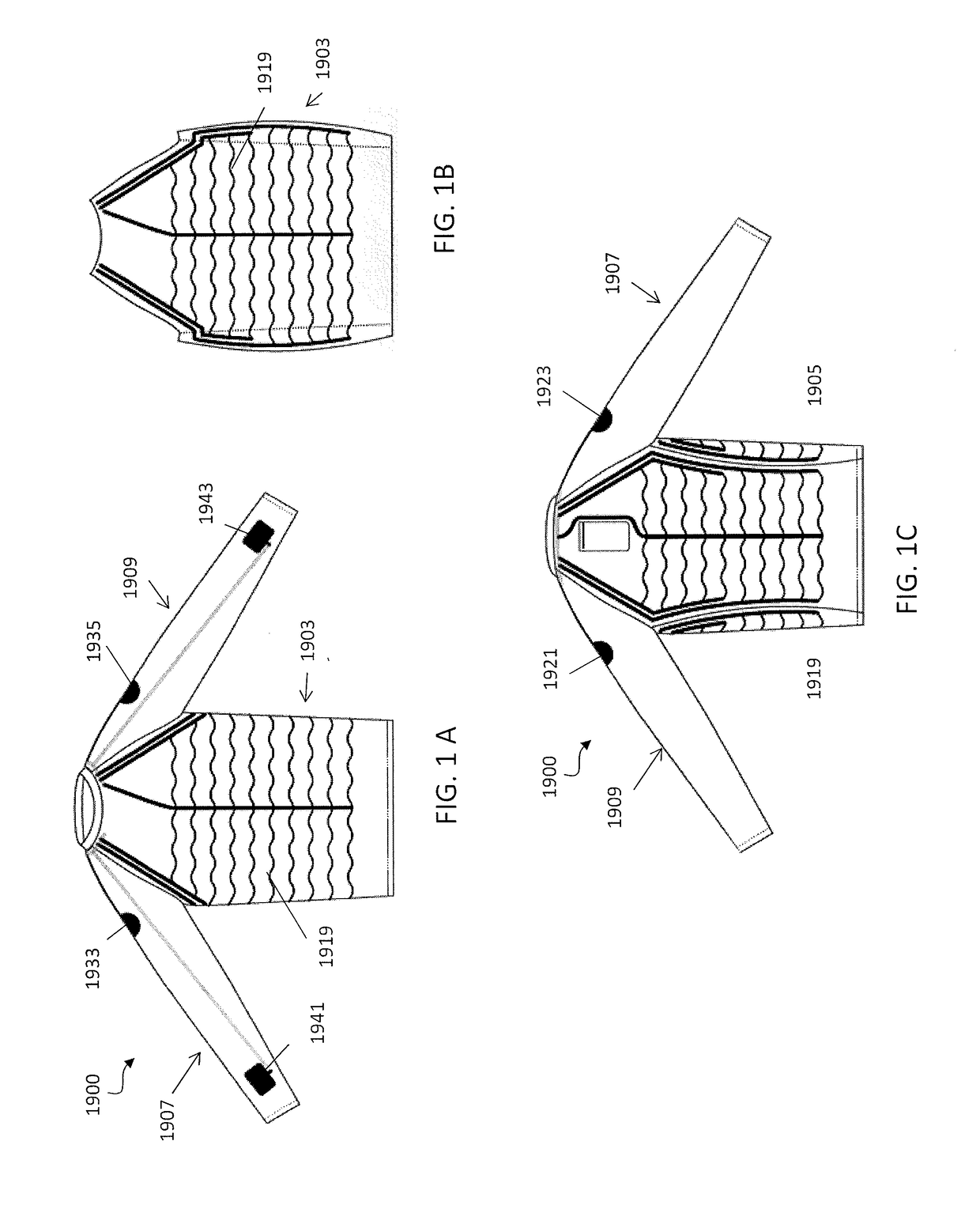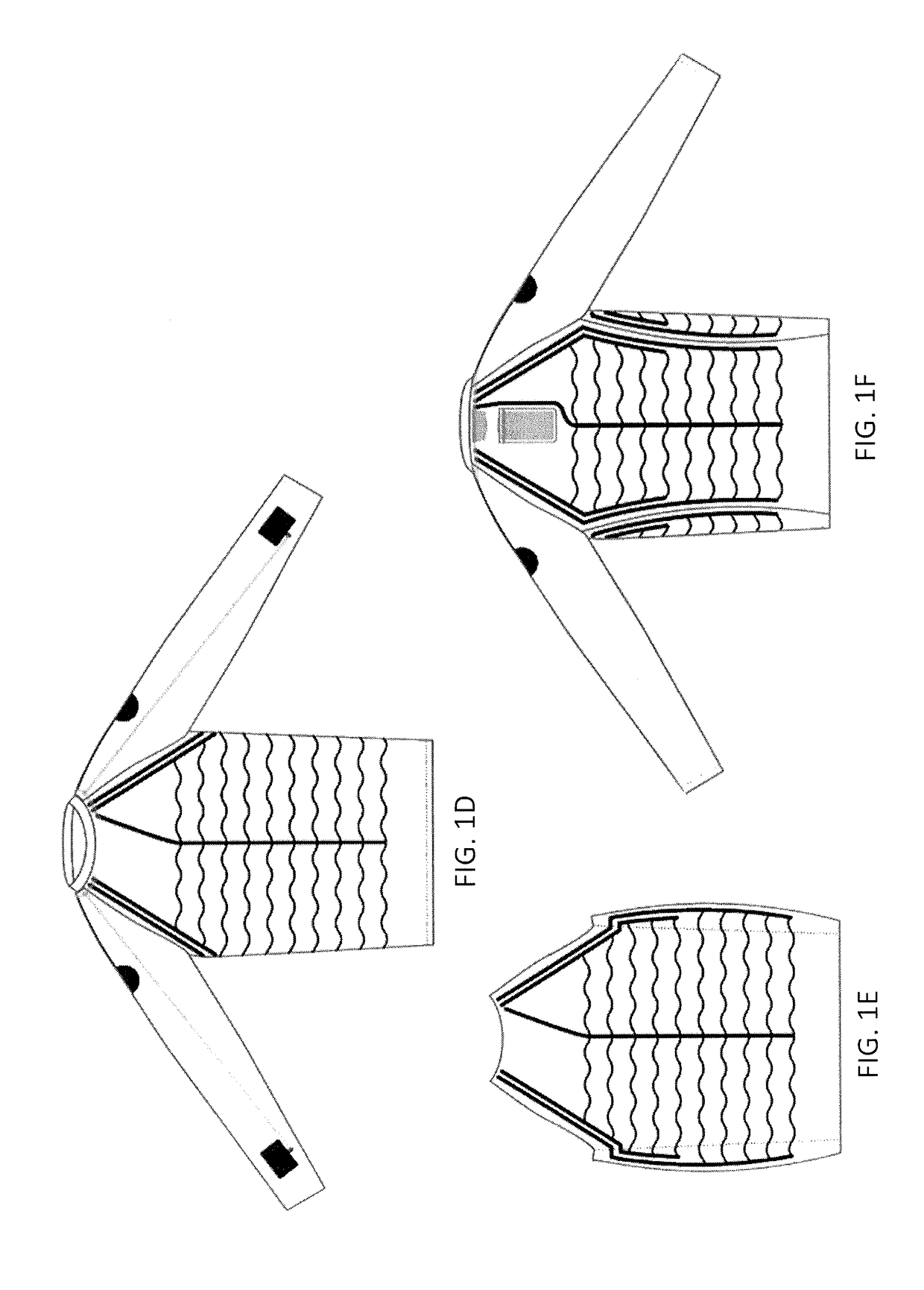Physiological monitoring garments with enhanced sensor stabilization
- Summary
- Abstract
- Description
- Claims
- Application Information
AI Technical Summary
Benefits of technology
Problems solved by technology
Method used
Image
Examples
examples
[0296]FIGS. 29A-29B and 30A-30B show another example of a garment as described herein, similar to that shown above in FIGS. 26A and 26B. In FIGS. 29A-29B and 30A-30B the garment is configured to detect both respiration and cardiac output (such as an electrocardiograph, ECG). Any of the sensors described herein may be included. In any of these garments, the apparatus may include a side-opening, a front opening or a back opening and fastener, such as a zipper or Velcro closure (not shown in FIG. 30A-30B). Chest electrodes 2905 (corresponding to and labeled as leads V1-V6) are arranged across the chest portion of the garment so that they may be positioned against the traditional positions of the wearers chest when the garment is worn. Right and left arm electrodes (RA, LA) are also show on the arms. Straps 2909 can be integrated into the garment (e.g., beneath the outer layer and / or between an inner and the outer layer), e.g., on the arms and across the chest and back 2909′ and / or wais...
PUM
 Login to View More
Login to View More Abstract
Description
Claims
Application Information
 Login to View More
Login to View More - R&D
- Intellectual Property
- Life Sciences
- Materials
- Tech Scout
- Unparalleled Data Quality
- Higher Quality Content
- 60% Fewer Hallucinations
Browse by: Latest US Patents, China's latest patents, Technical Efficacy Thesaurus, Application Domain, Technology Topic, Popular Technical Reports.
© 2025 PatSnap. All rights reserved.Legal|Privacy policy|Modern Slavery Act Transparency Statement|Sitemap|About US| Contact US: help@patsnap.com



